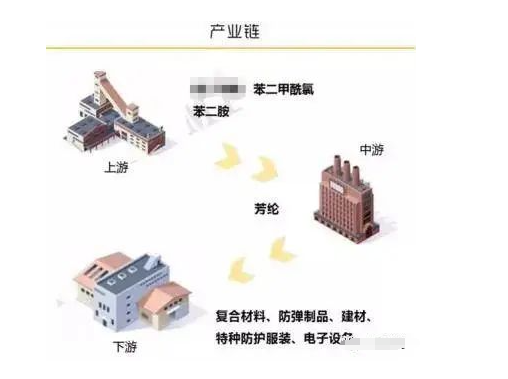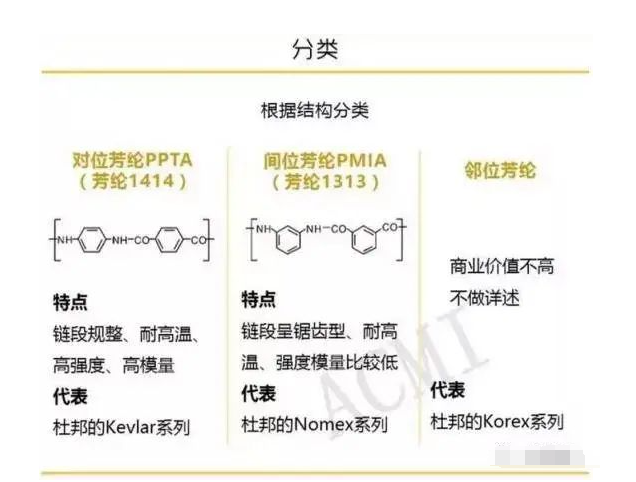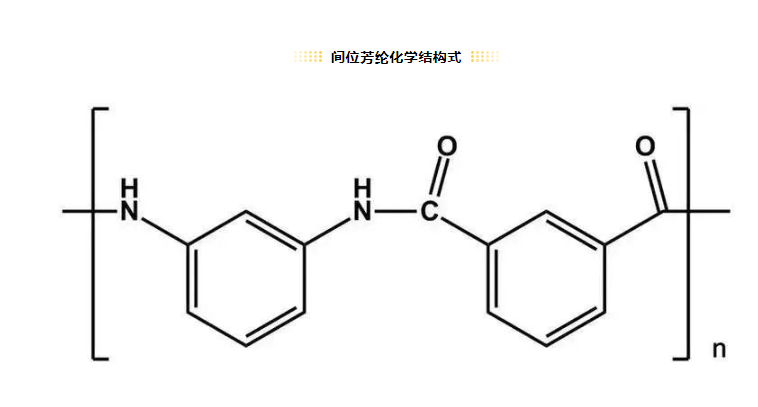The main performance characteristics of aramid fiber
Main performance characteristics of aramid
Aramid fiber has excellent properties such as light weight, flame retardant, temperature resistance, insulation, radiation resistance, high strength, and high elastic modulus; it is widely used in military and national defense, security protection, aerospace, environmental protection, electronic and electrical materials and other fields.
1 Mechanical properties
The most significant characteristics of para-aramid are high strength and high modulus. Its strength is greater than 25 g/den, which is 5 to 6 times that of high-quality steel, 3 times that of glass fiber, and 2 times that of high-strength nylon industrial yarn; its modulus is It is 2 to 3 times that of high-quality steel or glass fiber, 10 times that of high-strength nylon industrial wire, and its toughness is 2 times that of steel wire. In addition, aramid fiber is light in weight, its weight is only about 1/5 of steel wire.

Performance comparison of para-aramid fiber and other high-strength fibers
2 Heat resistance
Aramid fiber has long-term thermal stability. Aramid 1313 has almost no loss of strength at 130°C. It can be used at 220°C for more than ten years. At 260°C for 100 hours, the mechanical strength still maintains 65% of the original value at 400°C. Begins to carbonize without melting. The heat resistance of aramid 1414 is better than that of aramid 1313. The shrinkage rate at 150°C is 0 and it does not decompose or melt at a high temperature of 560°C. The strength and modulus of nylon and polyester decrease as the temperature increases. The thermal performance indicators of each fiber material are shown in the table below.

3 Flame retardant properties
Usually the oxygen content in the air is 21%, but the limiting oxygen index of aramid 1313 is greater than 28%, and the limiting oxygen index of aramid 1414 is about 30%. It is a flame-retardant fiber, so it will not burn in the air and does not support combustion. It is self-extinguishing and does not produce droplets. When encountering extremely high temperatures, the fibers will rapidly expand and carbonize, forming a unique thermal insulation layer, which can block external heat from entering the interior and play an effective protective role. This inherent characteristic derived from its own molecular structure makes aramid permanently flame-retardant and has the reputation of “fire-proof fiber”.
4 Chemical corrosion resistance
Aramid fiber has excellent chemical corrosion resistance. Usually, the performance of aramid fiber will be significantly affected only if the aramid fiber is exposed to a relatively high concentration of acid or alkali solution for a long time. Also, aramid is not sensitive to mold or rust.
5 Electrical insulation
The electrical conductivity of aramid fiber is very low, and because the fiber has poor hygroscopicity, it can maintain excellent electrical insulation properties in high and low temperature and high and low humidity environments. The breakdown voltage of insulating paper made of aramid 1313 can reach 100kV/mm. The resistance of aramid 1414 reaches 5×1014Ω/cm. Due to its excellent electrical insulation properties, it has good application prospects in the electronic and electrical fields.
In addition to the properties introduced above, aramid cord also has good aging resistance, wear resistance and radiation resistance. As a type of high-performance material, the excellent properties of aramid fiber have been developed and applied in different fields.

Application fields of aramid
1. Military and defense fields
Aramid composite materials can be used to manufacture missile solid rocket motor casings, pressure vessels, spacecraft cockpits, submarines, bulletproof armored vehicles, bulletproof cash transport vehicles, bulletproof plates, bulletproof helmets, body armor, etc.
1)Bulletproof helmet
Compared with previous metal helmets, aramid bulletproof helmets are significantly lighter in weight, have increased protection area, improved comfort, beautiful styles and good formability. The QGF02 type aramid bulletproof helmet successfully developed in our country has an effective protection area of 1266cm2, which is 16% more than the original steel helmet GK80. The mass is only 1.25Kg, and its V50 value (international bulletproof equipment evaluation standard) reaches 630m/s. .
2) Body armor
With the development of new sensing systems such as chemical and nuclear weapons, the requirements for military protection have increased significantly. They are not only required to be able to adapt to the environment and physiological requirements, but also to be lightweight, durable, bulletproof, chemical resistant, flame retardant and have good camouflage properties. Modern combat training uniforms are mainly made of aramid 1313, aramid 1414, etc., which are 20% lighter than previous nylon fabrics, and have flame retardant, fireproof, anti-static and other functions. The use of aramid materials can make bulletproof vests light in weight and small in size, significantly improving the bulletproof performance, and the bulletproof effect can be increased by 40%.
Aramid fiber is expanded to absorb the energy of bullets, and is dense enough to prevent stabbing. An improved vest produced using this fabric can provide bullet protection higher than level III, with a thickness of less than 8mm. A soft bulletproof vest made of high-grade bulletproof aramid weft-free fabric and high-performance polyethylene film has better bulletproof performance and heat resistance than ultra-high molecular weight polyethylene fiber.
3) Bulletproof armor
Aramid and metal composite armor plates and aramid and ceramic composite armor plates have been widely used in bulletproof armored vehicles and bulletproof cash transport vehicles. The U.S. M1 main battle tank armor uses aramid composite materials to protect against bullets, armor-piercing projectiles, armor-piercing projectiles, etc.; the LAV-25 infantry fighting vehicle is equipped with an aramid lining near the crew position to prevent penetration of the armor. Projectiles, fragments, and fragments of broken armor injure the vehicle’s occupants.
At present, aramid helmets, aramid body armor, etc. have been widely used in multinational forces, such as China, Russia, the United States, Germany, Japan, the Netherlands, Israel, etc.
2. Safety�The rolling resistance is reduced by 3% to 7%. For a tire company with an annual output of 10 million units, every 7% reduction in rolling resistance means saving 1 billion yuan in fuel for society and reducing 310,000 tons of carbon dioxide emissions. It is reported that the application of aramid materials in green tires can reduce the average mass of high-performance car radial tires by 10% and reduce rolling resistance by 12%. Aramid has therefore become one of the fastest growing skeleton materials in recent years.
Aramid short fibers are also used in rubber components such as tire treads and V-belt bottom rubber materials to serve as reinforcements. Aramid can even be combined with resin to replace steel wire to make tire beads, greatly reducing the weight of the tire. According to reports from Dopont in the United States and Acordis-Akzo in the Netherlands, including aramid short fiber, the world’s tire manufacturing industry consumed more than 6Kt of aramid in 2010.
However, the annual domestic consumption is only about 6,000 tons, and the balance between supply and demand is basically achieved through exports. Historically, meta-aramid was an industry with an imbalance between supply and demand. There were four suppliers competing with each other, with a total annual production capacity of 12,000t, while the domestic annual demand was only 5,000t at that time. Due to large production capacity and small demand, new entrants’ product performance is poor and production stability is not high, making it difficult to be accepted by the high-end market. They focus on low-price competition in the field of industrial filtration, resulting in product selling prices falling from 160,000 yuan/year in 2009. Ton has dropped all the way to 60,000 yuan/ton in 2015, and has been hovering at low levels for many years. In 2017, after two companies closed their production lines, the selling prices and profitability of aramid products gradually recovered. In recent years, the supply and demand of the meta-aramid fiber industry have been basically balanced. As the market development effect gradually appears, the meta-aramid fiber projects of domestic Taihe New Materials, Yancheng De’ande, Ganzhou Longbang, Liaoning Furui and other companies have also successively entered the market. Expansion or preparation stage.







